Key Points
• Lighting: Good lighting is essential in taking pictures of breakfast foods—it makes textures and colors pop. Natural light is best because it’s gentle and shows true colors.
• Composition: How you arrange things in your photo, like the food, dishes, and background, matters a lot. It should look good and feel balanced. Don’t be afraid to leave some empty space; it can make your main subject stand out.
• Styling: Picking the right props and surfaces to match the breakfast vibe is key. You also have to set up the food so it looks yummy. Paying attention to small details, including using fresh ingredients and pretty garnishes, makes a big difference in your photos.
Contents
- Key Points
- Why Breakfast is Key in Food Photography
- Understanding Breakfast Photography
- Essential Breakfast Food Photography Guide
- Breakfast Food Photography: Simple Tips for Colorful Shots
- Texture in Breakfast Foods
- Tips for Hot Breakfast Photography
- Basic Editing Tips for Breakfast Food Photos
- Creating Stories Through Breakfast Photography
- Morning Rituals and Breakfast Memories
- Exploring Breakfast Food Photography Worldwide
- Ethical Considerations in Breakfast Food Photography
Taking good photos of your breakfast isn’t as simple as it might seem. It’s an art that captures the essence of the morning meal. Whether it’s showing off a basic bowl of cereal or a fancy brunch spread, the goal is to make the viewer hungry. You’ve got to think about the lighting, how to arrange everything, and the way you make the food look its best.
Why Breakfast is Key in Food Photography
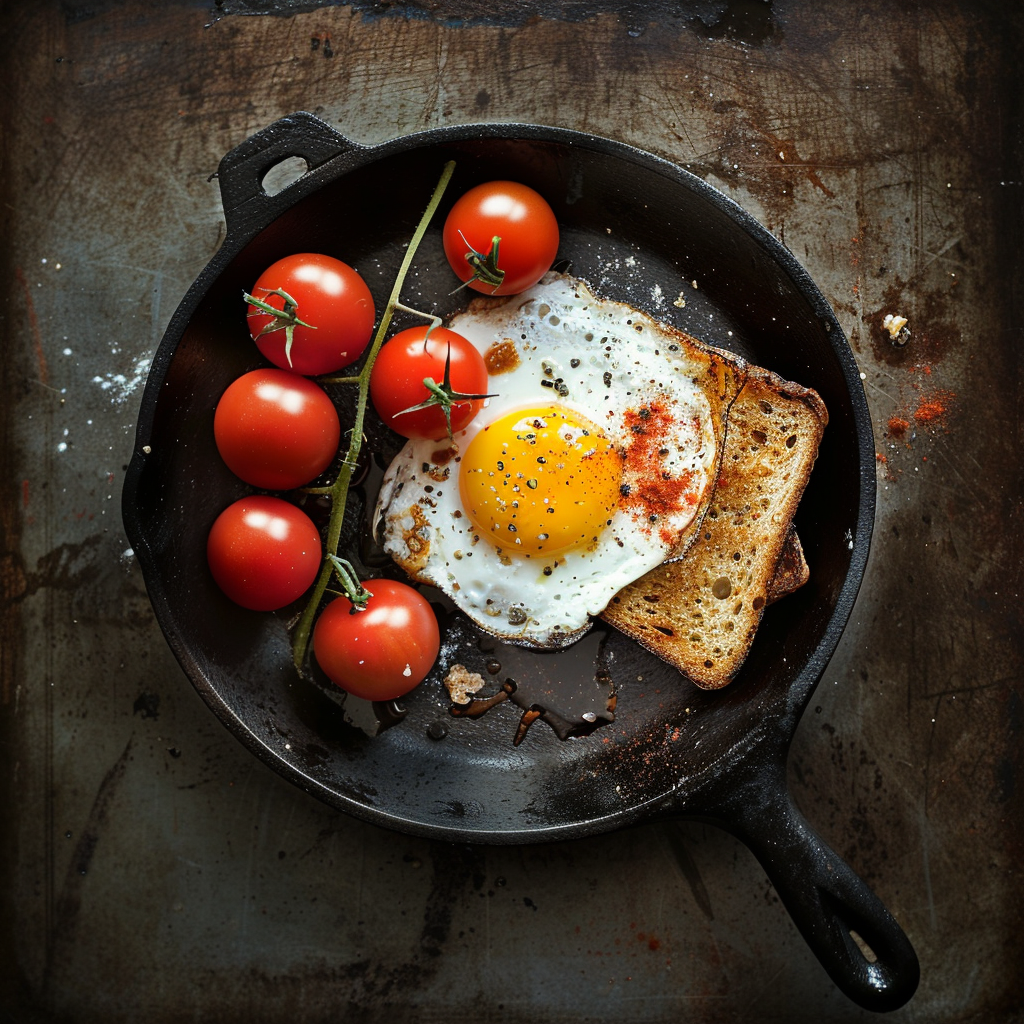
People often say breakfast is the key meal of the day, and for food photographers, it’s no different. Snapping photos of breakfast plates is important because they naturally look great and make people feel good. They bring to mind feelings of warmth, coziness, and a new beginning. They’re also welcoming to those who see them. Plus, breakfast foods change a lot from one culture to another, giving photographers loads of chances to play with different looks, shades, and stuff that goes into the dishes.
Understanding Breakfast Photography
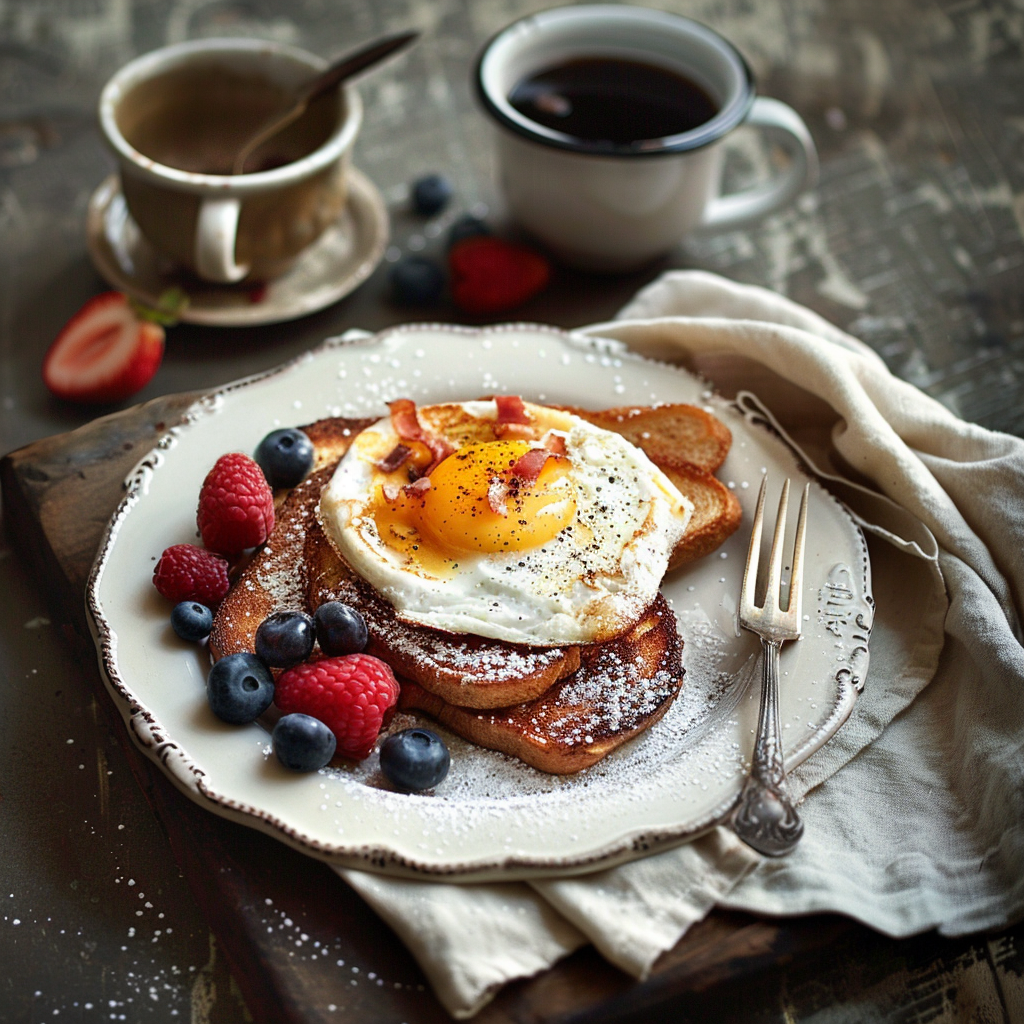
To capture breakfast in a photo, you need to focus on the small details. Getting the right mix of shadows and light is key – it can make your photo look amazing and bring out the textures that suggest how tasty the meal is. When you set up the shot, think about angles and how you arrange everything to look good together. Photos of breakfast aren’t just about the food; they’re also about telling a story and making people feel like they can sit down and join in.
Learning about breakfast foods means looking at different kinds and why they matter in cultures. Breakfast is often called the most critical meal. It includes all sorts of food items that are symbols of the morning eating time. Here, we don’t just name what’s on the plate but also dig into what it means for people and society.
What Are Breakfast Foods, and Why Do They Matter?
Talking about breakfast foods means things we usually eat in the morning. This could be anything from eggs and bacon to doughnuts and porridge, and it changes based on where in the world you are. Understanding these foods means looking at their cultural roots. For example, pancakes have a special place in American homes, but in Asia, congee might take center stage. These meals are more than just food; they represent local farming, history, trade, and family traditions.
The Meanings Behind Breakfast Items
To get the meanings behind breakfast, we look at common items and what they remind us of. Usual breakfast choices include basics like bread, cereal, fruits, and yogurt. Each one brings up different thoughts – cereal might make you remember being a kid or rushing around in the morning, while bread could be about comfort or keeping things simple. We’re not just taking photos of food; we’re capturing parts of life that are rich with the flavors of our past and individual stories.
Essential Breakfast Food Photography Guide
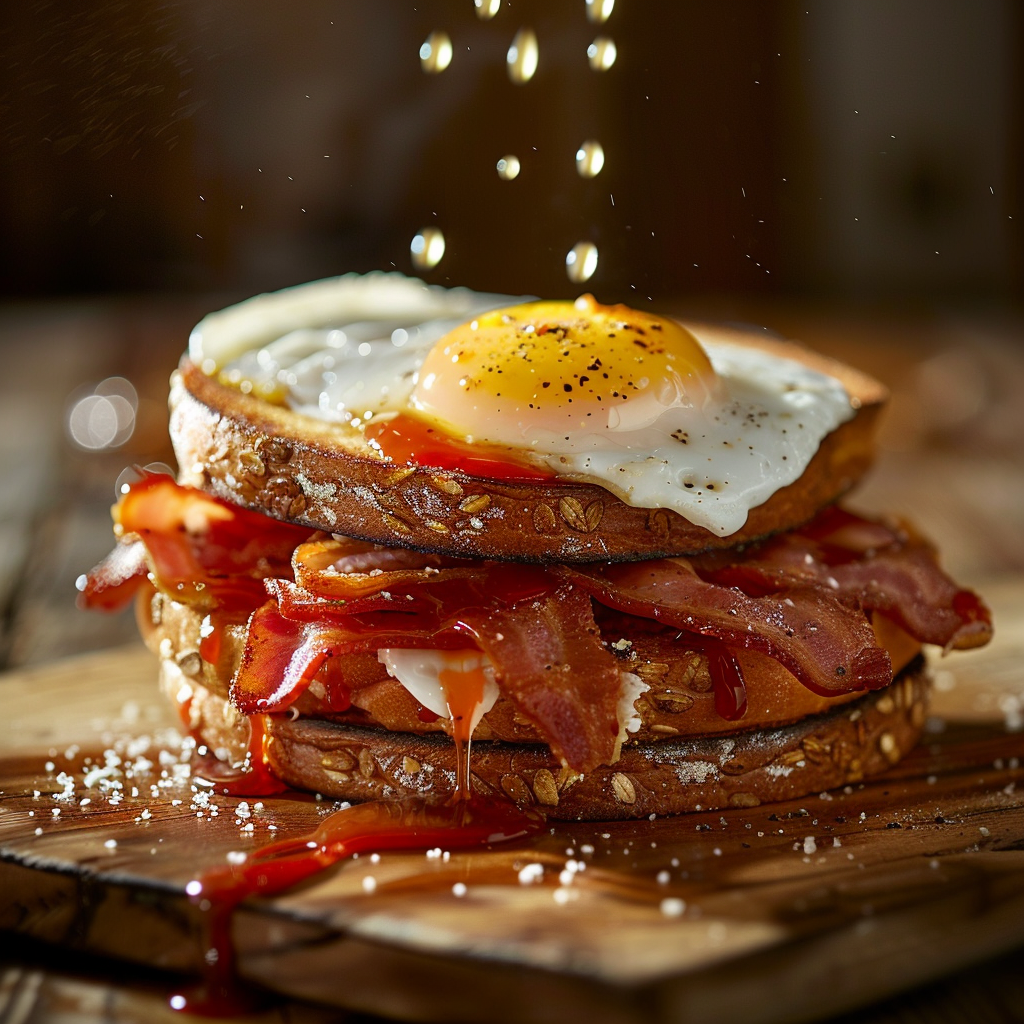
Taking pictures of breakfast isn’t just about snapping a photo. It’s an art of arranging everything so the picture looks just as tasty as the food tastes. The presentation can really show off the freshness and yummy factor.
Breakfast Food Styling Techniques
When setting up breakfast for a photo shoot, look for balance in texture and color. Choose plates and utensils that highlight, not hide, your eats. Little extras like napkins and cutlery are extras; they should make your main dish pop, without stealing the show.
Layout and Arrangement of Breakfast Items
Put your star dish smack-dab in the middle of the plate, looking its best. Tuck in smaller bites around it, like fruit or baked goods, but don’t cram them in. Let natural light work its magic, casting soft shadows that give your food dimension.
Styling Tips Tailored for Breakfast Delicacies
- Keep it simple – less is often more.
- Use colors that scream ‘good morning’, like fresh greens or sunny yellows.
- A drizzle of syrup or dollop of cream can make it decadent, but don’t overdo it.
- Throw in a human touch here and there; a hand reaching for toast adds warmth.
The key thing to remember? Keep the food’s natural beauty front and center. You want your photos to make people’s mouths water just like the smell of a cooked breakfast does.
Natural Light and Its Impact on Breakfast Photography
Natural light is king for capturing breakfast at its best. It makes everything look warm and inviting. Shoot near a window with indirect sunlight to really bring out the bright colors and details. Natural light makes photos feel real and mouthwatering, exactly what you’re aiming for.
Artificial Lighting Setups for Different Breakfast Scenes
No sun? No problem. Artificial lights like a softbox can pretend to be daylight. Use fill lights or reflectors to chase away shadows so every crumb and detail shows up. But watch out – you’ll need some know-how to keep it looking natural and tasty. Play with angles and brightness to get those pancakes just right.
Breakfast Food Photography: Simple Tips for Colorful Shots
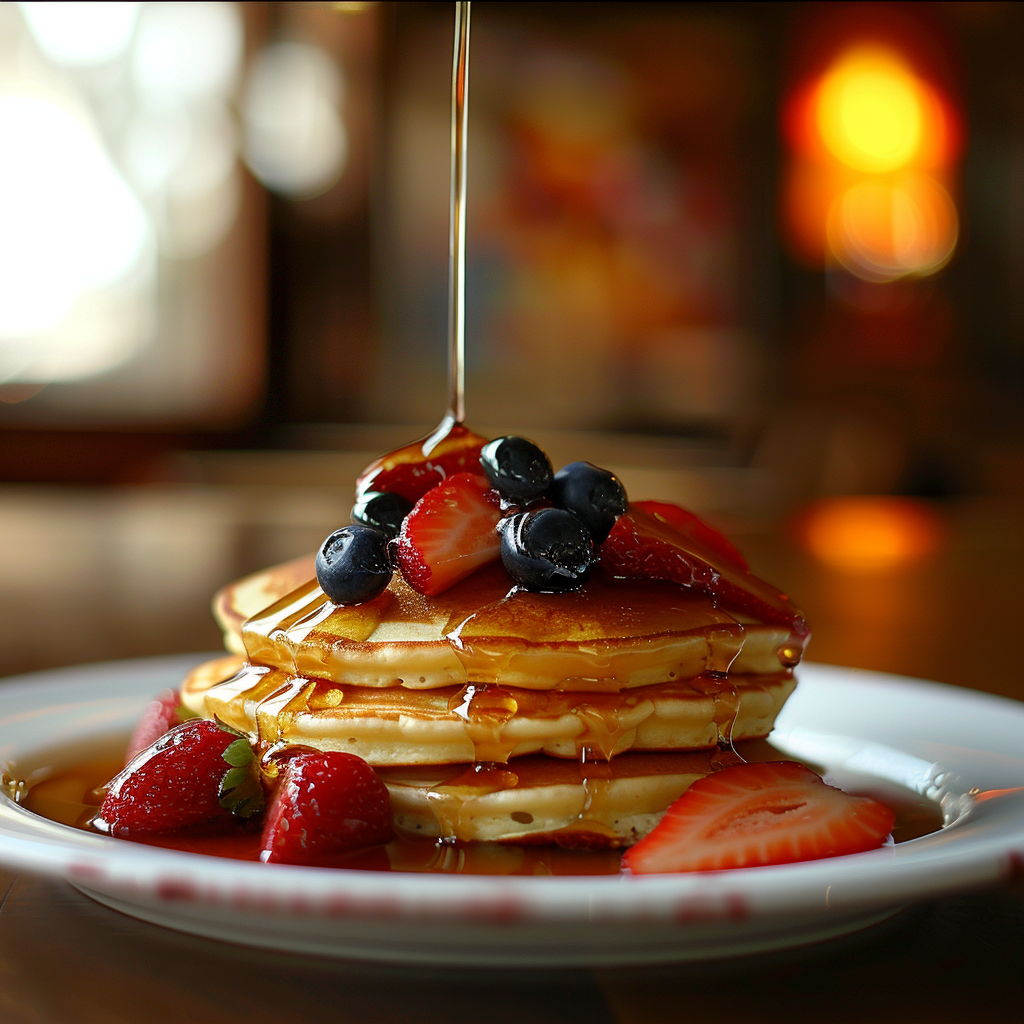
In photography, color is key, especially when snapping pictures of breakfast foods that look as good as they taste. Using the right colors can make people feel something special and create balance in your photos. For shots of your morning meal, color is super important because it makes the food look even more mouth-watering.
Pastel colors are perfect for capturing that morning feel and are easy on the eyes. They let the brighter colors of your breakfast stand out. Bright, warm colors like yellow or orange bring to mind the cozy light of the sunrise and make viewers feel that warmth and comfort too. If you put these colors together just right, you’ll end up with a photo that tells a story about your meal, just like a perfect spice combo brings out the best taste in food.
What Colors Say “Breakfast”?
There are some colors that just scream breakfast. Imagine shades that remind you of classic breakfast ingredients:
- Soft beige from oatmeal or fluffy pancakes
- Vivid reds from strawberries or jam
- Rich browns from toast or muffins
- Bright greens from a dash of parsley or avocado
- Cheerful yellows and oranges from eggs or orange juice
Choosing a background that plays off these colors can make them really stand out. Go for neutral colors if you want the natural look of the food to shine, or pick a bold contrast to make the colors pop even more.
Making Breakfast Look Yummy with Color
To get those breakfast foods looking tasty with color, try these ideas:
- Go for contrast: Putting opposite colors together, like blueberries against yellow French toast, really catches the eye.
- Keep it balanced: If your dish is colorful, use simple colors for your props and background to keep all eyes on the food.
- Stick to a theme: Use colors that are neighbors on the color wheel for a photo that feels put together. Think of placing fruits together that have similar colors.
- Show off the fresh: Keep your greens looking bright to make the whole dish seem super fresh.
By playing with color, you can make your breakfast dishes look irresistible in pictures. They’ll be like candy for the eyes! Always remember, every color has its own vibe and story, so pick carefully to show off what eating breakfast is all about.
Texture in Breakfast Foods
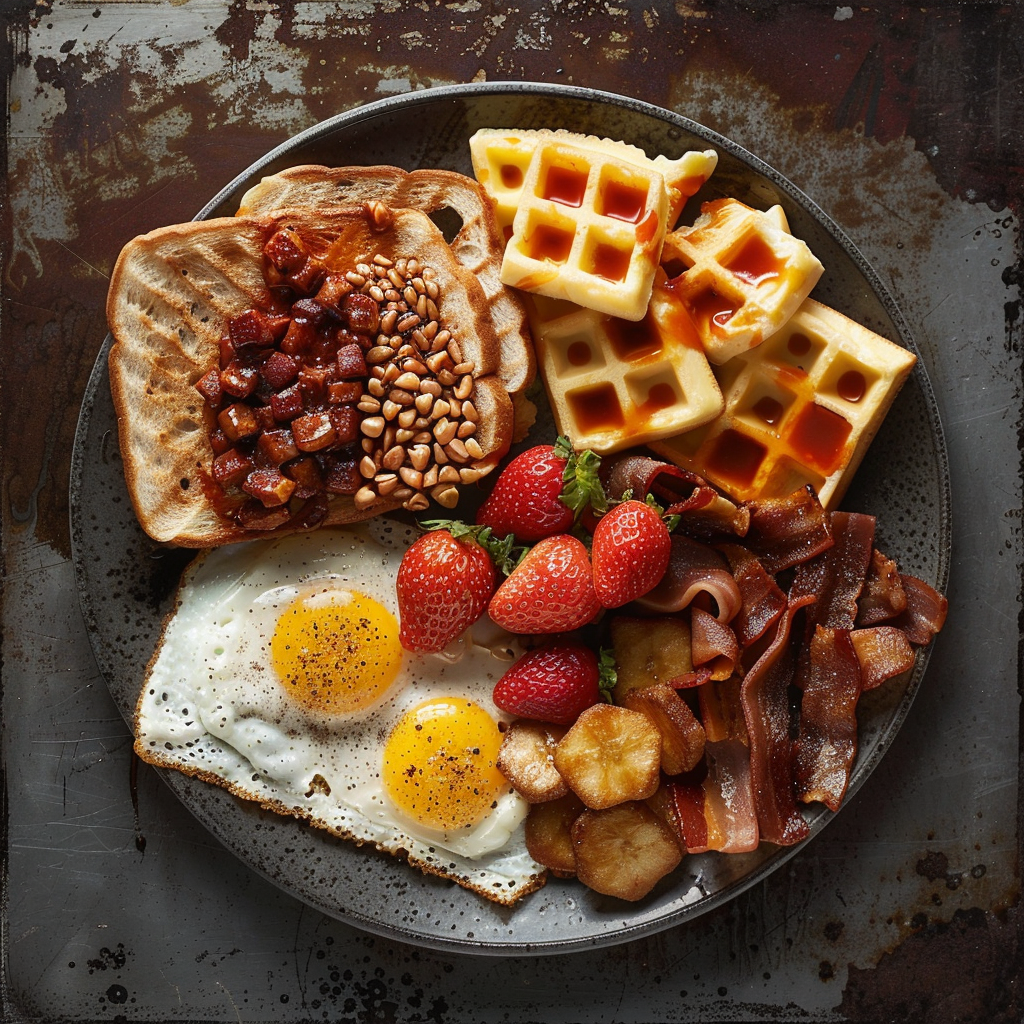
The texture is key when taking photos of breakfast. It’s not enough for the food to look yummy; the picture needs to make you feel it too. Imagine the smooth curves of oatmeal mixed with crunchy nuts and seeds. This mix not only looks good but also makes you want to taste it. The crunch of toast paired with a soft egg is another way to add excitement, both visually and physically. Good lighting can make these textures stand out, showing off the rough and smooth details by creating strong shadows and highlights.
Focusing on Patterns
Patterns grab attention in food photography as well. Stack pancakes neatly, add butter evenly, and pour syrup in a steady pattern to catch the eye. The tiny dots on bread or the even cut of fruit can create patterns that look orderly and satisfying. But there’s more – how you set the table matters too. Line up your silverware, fold your napkins neatly, and place your plates just right to make the breakfast pop even more.
Texture and patterns are big deals in breakfast photography. They turn a simple snap of your food into something that touches your heart. By playing with different looks and feels, photographers bring out stories and joys in their work, turning a regular photo into something special.
Tips for Hot Breakfast Photography
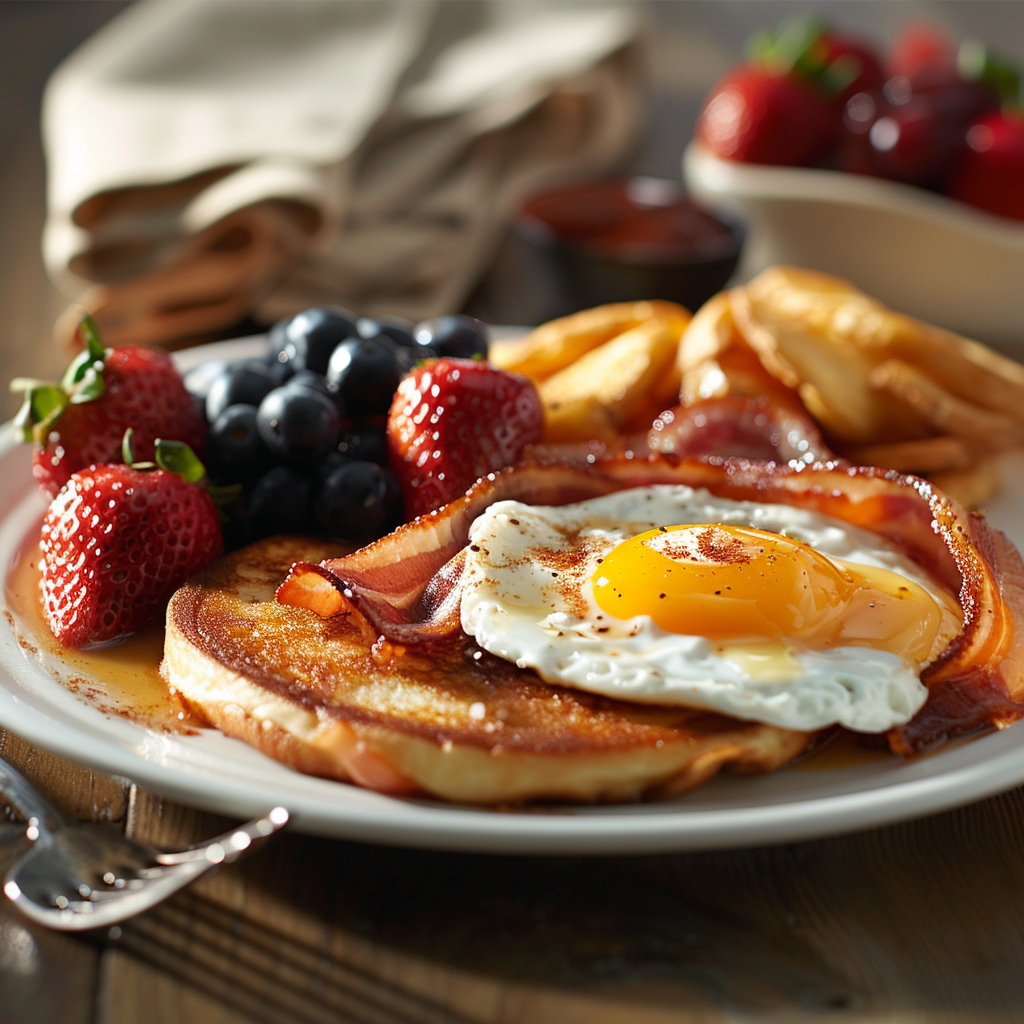
Taking pictures of hot breakfast items is all about focusing on the details that make the food seem warm and just cooked. The goal is to get people to almost feel the steam and smell the breakfast when they look at your photos. Below are some tips to make your pictures stand out.
How to Show Steam
Showcasing steam can be tough, but it’s the best way to show that the food is hot. Take your pictures right after the food is done cooking when there’s the most steam. Using backlighting will make the steam pop, especially with a dark backdrop. If your food starts to cool off and lose steam, try reheating it with a steamer or in hot water to get that steamy effect back.
Signs of Heat
Show things that let viewers know the food is hot, like shiny surfaces that suggest something was just fried or baked, or liquids with that wavy look you get from heat. When you’re photographing drinks like coffee or tea, capture them just after you pour to get those cool patterns and bubbles on top.
Visuals of Freshness
To make the food look fresh, include stuff that’s usually hot, like crispy bacon or oozing butter. Toss in some fresh herbs or bright spices for extra freshness. Also, show water droplets on jars and pots to give off that fresh, warm vibe.
Try not to use the same angles and placements over and over—switch things up. Pay attention to small things like shiny jam on toast or syrup pouring onto pancakes, these little details add a big punch.
And remember, it’s okay if your pictures aren’t perfect—in fact, little flaws can make them more appealing. A fork placed wrong or a napkin hanging off the edge of the table can make the photo feel real. With these pointers, people looking at your photos will be dying for a taste of that morning feast.
Basic Editing Tips for Breakfast Food Photos
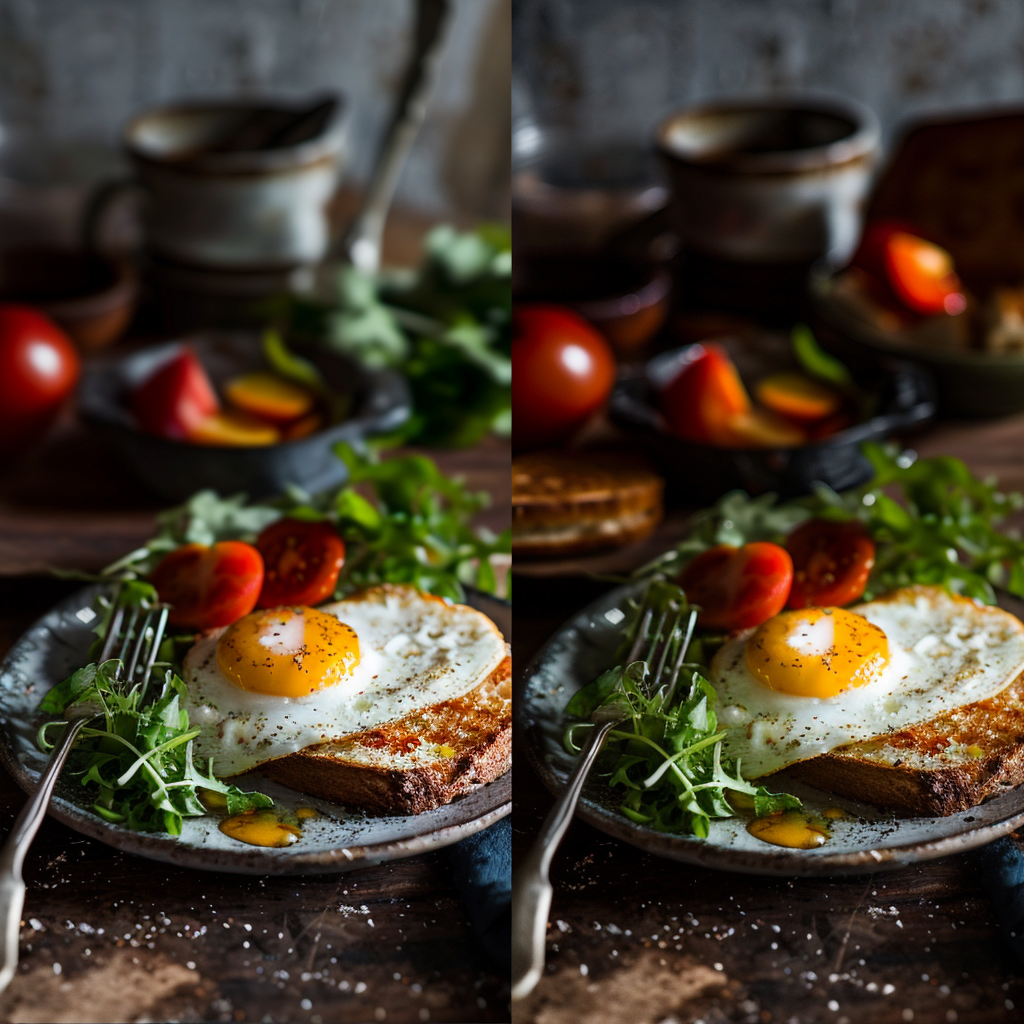
After snapping your ideal breakfast photo, it’s key to edit it to make it pop. Working on your picture can highlight the appealing textures and lively colors, ensuring the food looks as tempting digitally as it does in real life.
Post-Processing 101
Begin by loading your images into an editing program like Adobe Lightroom or Photoshop. These platforms have many options for fixing and improving your shots.
Adjust the exposure and contrast to ensure your image isn’t dim or faded. Fine-tuning the highlights and shadows will bring out the depth in your dish, creating an image that really catches the eye.
The clarity of your picture is super important, especially to showcase food textures such as crunchy bacon or fluffy bread. But be cautious with sharpening – too much can make the picture look fake.
Adjusting Colors for That Morning Glow
The colors in your photo can heavily influence its feel and attractiveness. Breakfast photos often have a morning light quality, which may seem a bit cold. To add warmth, try this:
- Tweak the white balance to cancel out blue tints or bland yellow shades so the meal appears more inviting.
- Alter the vibrance and saturation to brighten colors, but don’t go overboard or it’ll look phony.
Capturing morning light requires finesse. You’re aiming to mimic the warmth of a breakfast scene while keeping it vibrant and enticing. Proper color adjustment lets you reach this goal and makes your breakfast look mouth-watering.
Going Further: Expert Tricks
If you want more control, use the HSL (Hue, Saturation, Luminance) tool in your editor. This lets you alter individual colors to get exactly the look you’re after.
Photoshop’s layer masks let you edit specific parts of your image without changing everything. This is handy when different sections need unique edits in exposure or color intensity.
For trickier problems, like an unexpected item in your shot—you can use clone or heal functions to erase distractions, making sure the spotlight stays on your food.
Wrap up by adding a soft vignette to guide eyes to the middle of the plate or try a tilt-shift effect for a bit of flair.
All in all, smart editing can truly level up the charm of your breakfast images. You want to hit the mark between enhancing important elements and keeping things looking real. Play with these suggestions to discover what’s suited for each distinct setup and lighting condition.
Creating Stories Through Breakfast Photography
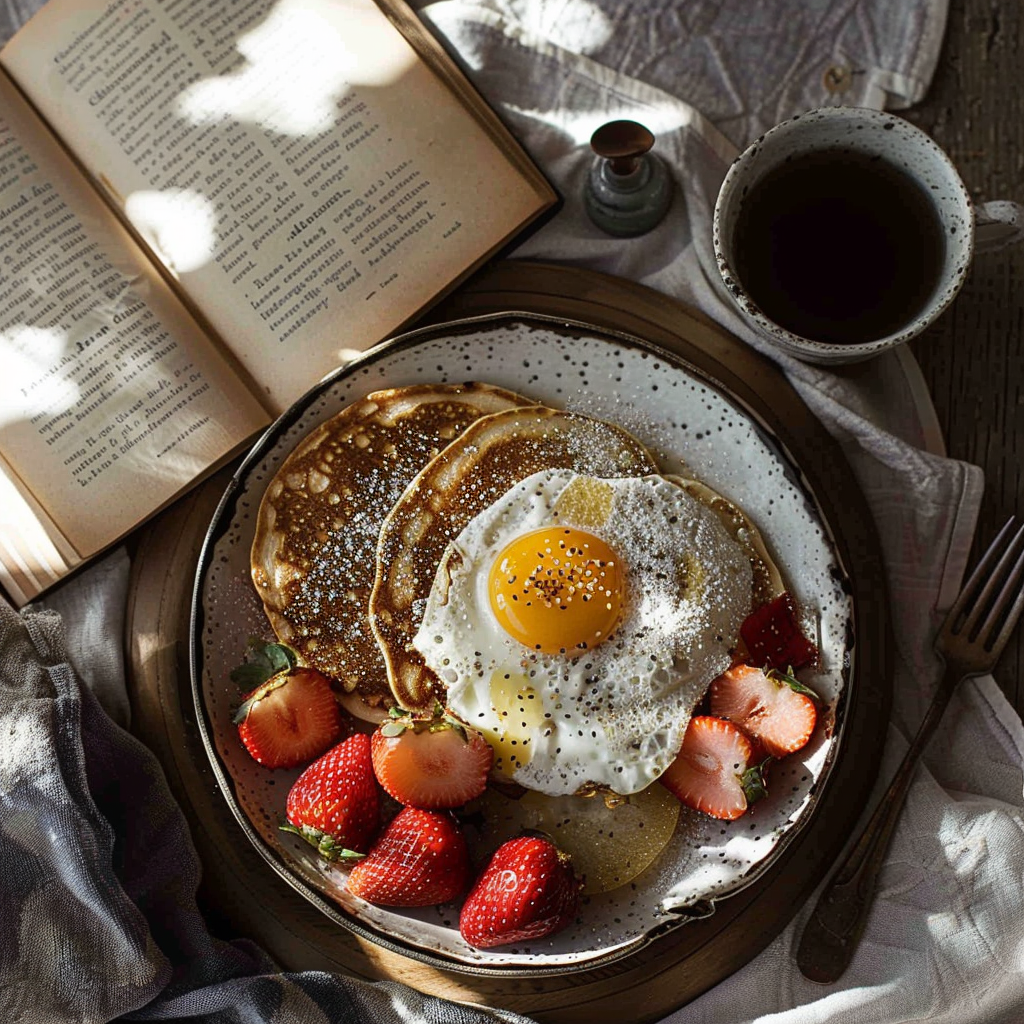
Telling a tale through pictures of morning eats is key in this field. A picture does more than capture food; it can take you back to a time or place, stirring up feelings and memories. It’s the whole package: the setting, the light, and the little details that draw you in. Imagine the morning light filtering onto a wooden table with warm bread, steam rising from a cup of joe, or a crumpled napkin suggesting a lazy Sunday. All these bits add up to get viewers to feel like they’re right there, in the moment.
Morning Rituals and Breakfast Memories
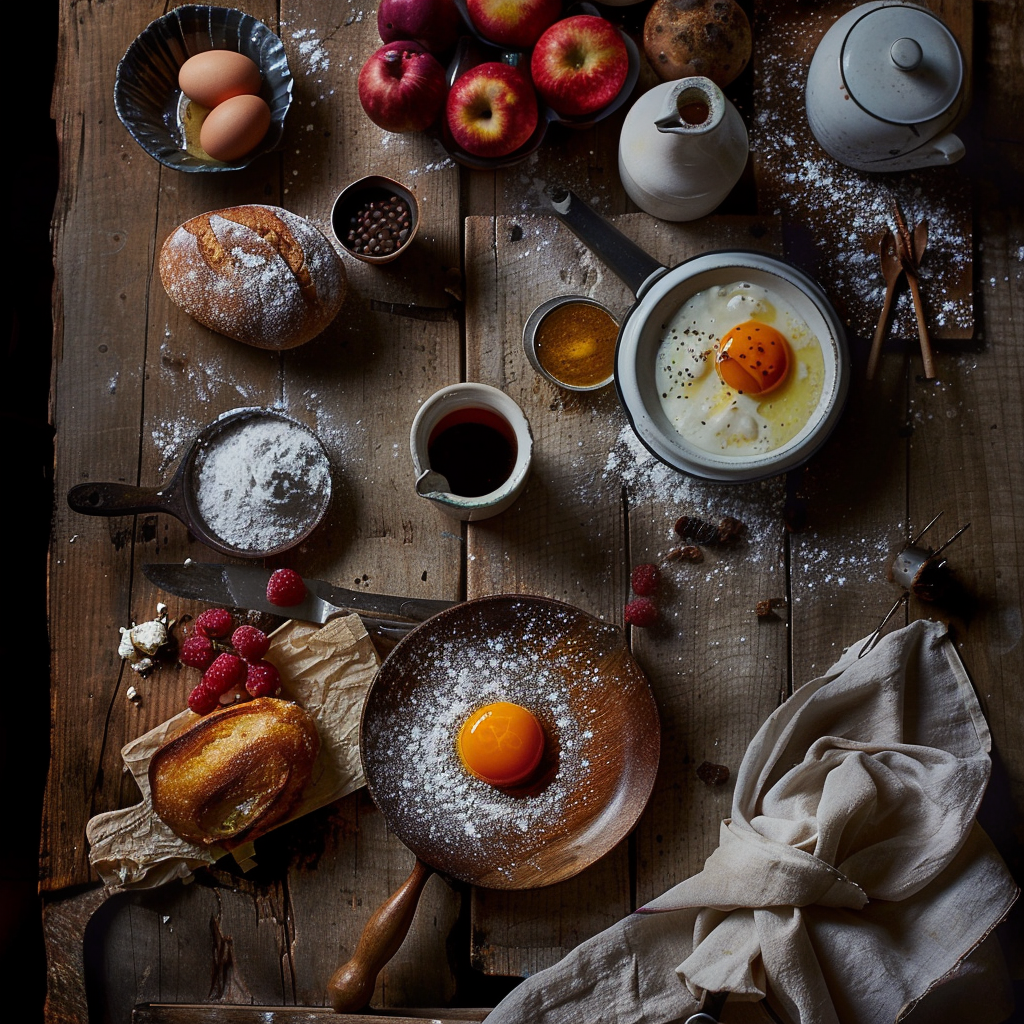
Breakfast is more than the day’s first meal; it’s steeped in tradition and daily habits. Snapping photos of breakfast means you’re not just showing off grub, but also the cozy and lively scenes that go along with it. You could capture the rush of a weekday morning or the calm of a lazy weekend breakfast in bed. Zoom in on these well-known customs and quiet times, and your photos will resonate with folks. They act like a welcome mat, encouraging viewers to stroll down memory lane thinking about their own morning traditions. This connection makes your photography more meaningful and relatable.
Exploring Breakfast Food Photography Worldwide
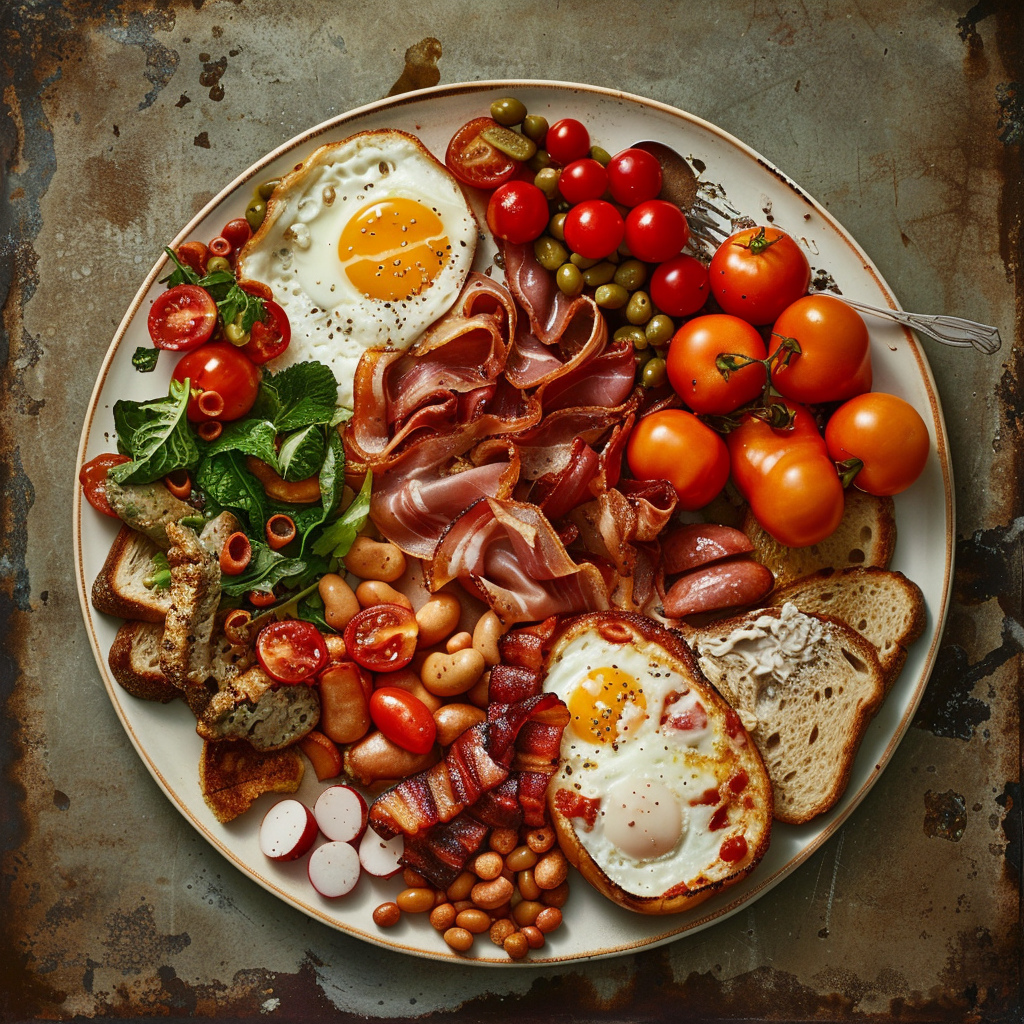
Looking at breakfast food photography, capturing the essence of morning meals across different cultures can be enticing. It’s all about showing off the bright colors, textures, and traditions of this daily ritual, which differs widely from place to place. When you look into this genre, notice that a Japanese breakfast might include miso soup, grilled fish, and rice, quite different from buttered scones and tea in England. Adjusting your camera to capture these unique cultural details not only makes the photo more interesting but also tells an engaging story of local flavors and eating habits.
Changing Styling and Composition for Different Cultural Breakfasts
Your method for styling and taking pictures should change based on the cultural background of the food. Take, for example, the Spanish ‘Pan con tomate’, where keeping it simple is best. The picture might highlight the fresh, vibrant colors of the tomato on toasted bread. Go further east, and a Turkish ‘kahvaltı’ needs a different approach – it’s a visual feast with a spread of cheeses, olives, eggs, and more, requiring a broader shot to get everything in. The goal is for each photo to make these morning foods come alive, showing how important they are to starting the day around the globe. Creating images that appeal to the senses needs a keen attention to detail, whether it’s a neatly made Japanese Tamagoyaki or a big pile of American pancakes swimming in syrup.
Ethical Considerations in Breakfast Food Photography
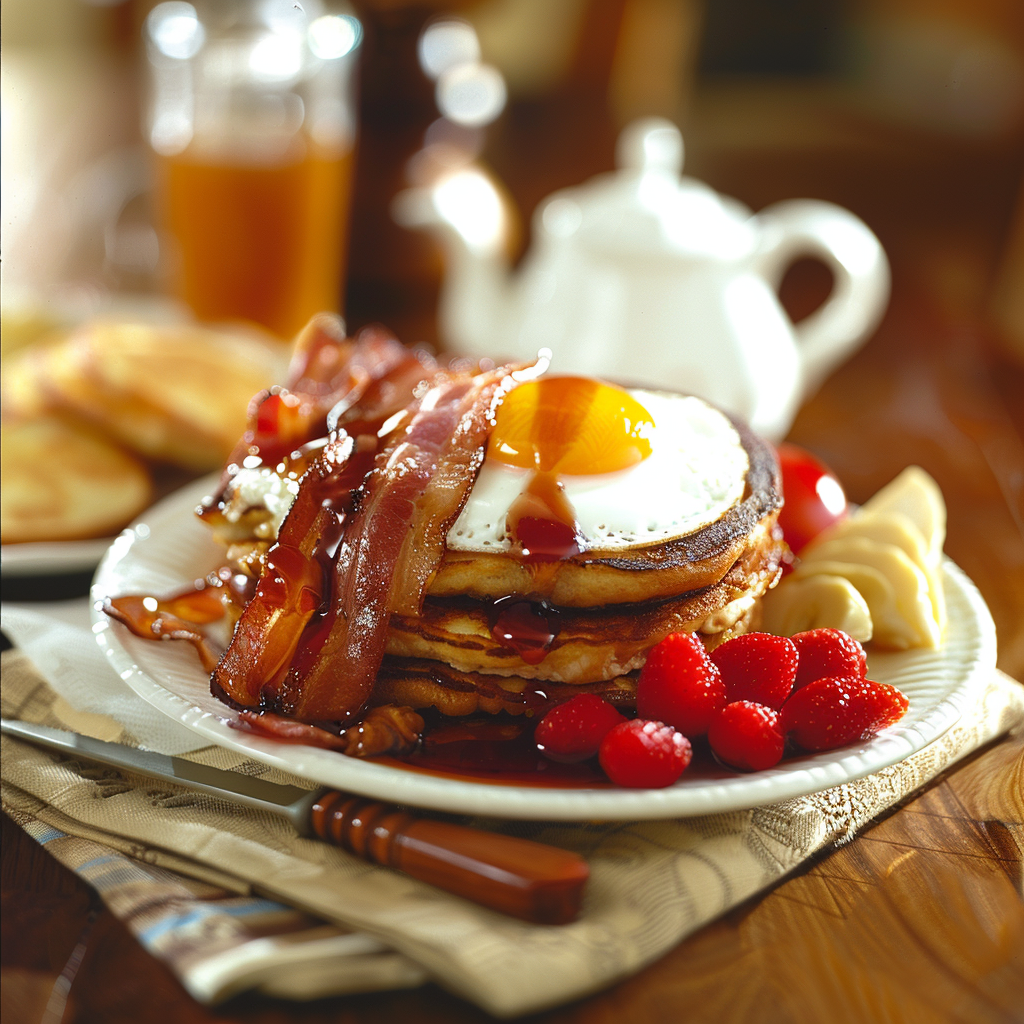
When you’re snapping photos of breakfast foods, it’s important to keep it real. You should aim to show the food as it is, without using any deceptions or artificial touch-ups.
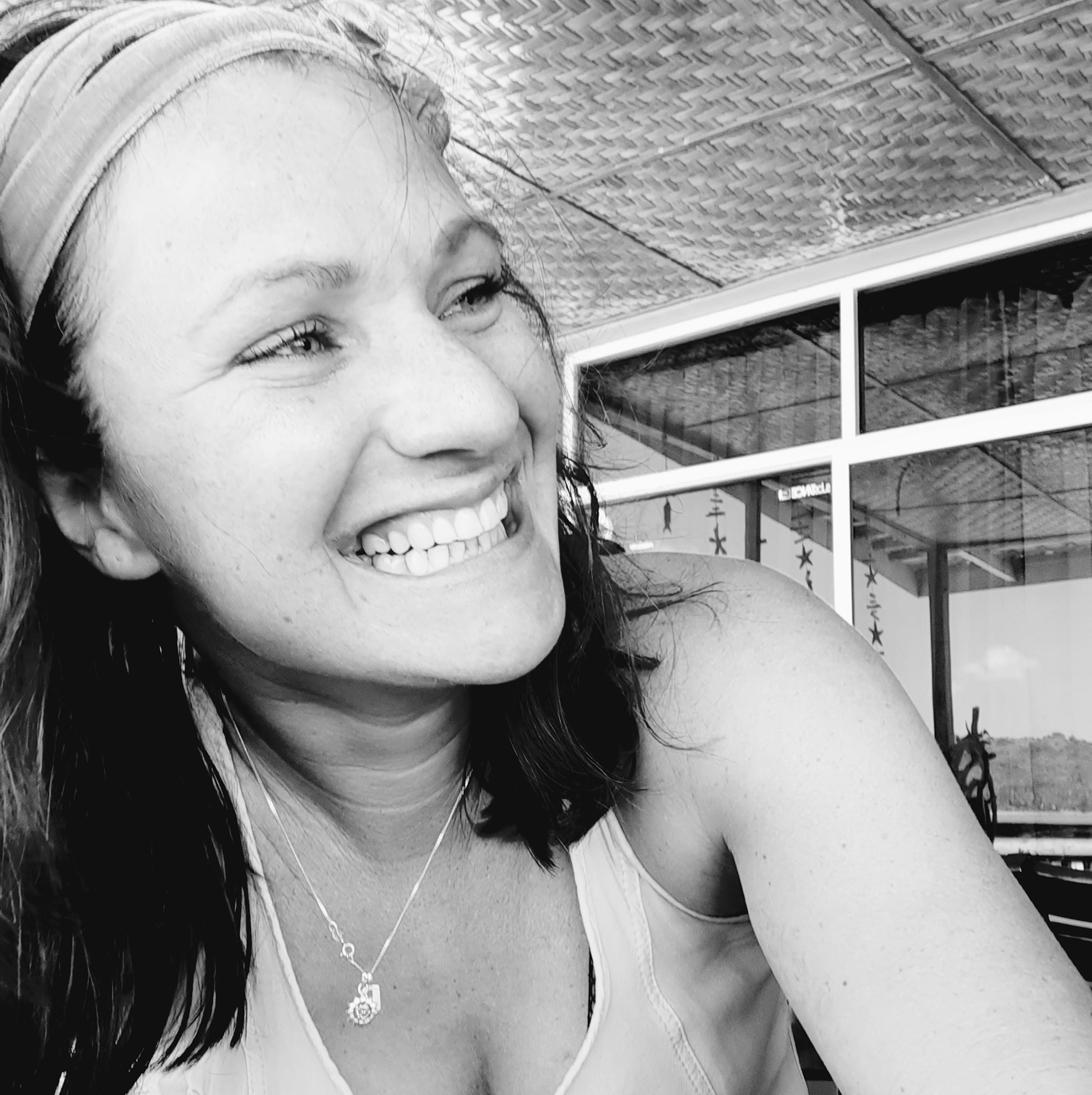
About Author
Rachel Noël is a professional photographer and videographer from the UK with over 10+ years of experience. Rachel specializes in Underwater, Tavel & Portrait photography among other areas.
